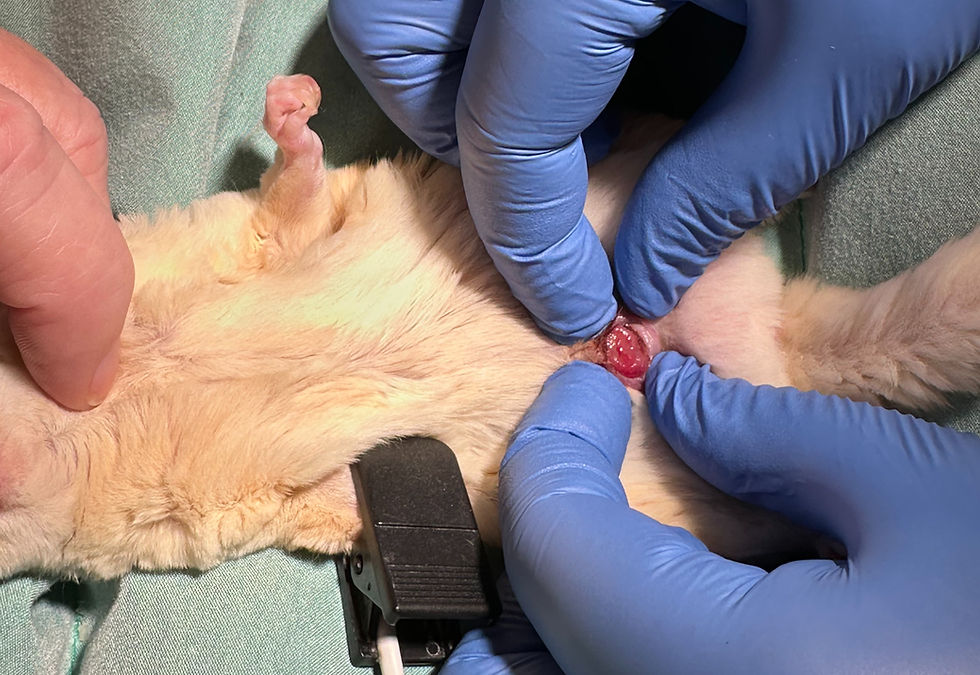Treatment for Mammary Cancer in Sugar Gliders: Should we use GnRH agonists?
- Serena Caunce
- Jul 31
- 2 min read
A few months ago I posted on mammary cancer in sugar gliders, and how I believe that it is way more prevalent than we think it is due to sugar glider owners not bringing their gliders to a veterinarian.
There has been new information circulating through the glider online forums on the use of an injectable GnRH agonist called leuprolide. This is a long-acting injectable medication that binds to the GnRH receptors that play a role in the reproductive cycle in mammals.
LH and FSH then communicate with the ovaries in females (testes in males). These hormones tell the gonads to produce sex hormones, estrogen and testosterone, then these hormones feedback to the hypothalamus. This negative feedback then signals to the brain (hypothalamus and pituitary) to stop its release.
As I mentioned in the previous post, when the ovaries produce estrogen, it signals to the mammary glands to produce more glandular tissue to prepare for nursing. We can block the production of estrogen by using a GnRH agonist.
It seems counter-intuitive, I know. Leuprolide, as a GnRH agonist, acts like GnRH, so wouldn't that increase the release of LH and signaling to the ovary? Yes, initially, but with the longer, depot products, the higher amount of GnRH receptor binding leads to downregulation of those receptors. This then leads to less estrogen in the circulation.
Leuprolide (Lupron) in human medicine is used as a puberty blocker, as a partial treatment for prostatic cancer, treatment for endometriosis and uterine fibroids. It has been used extra-label for breast cancer in humans as well.
In veterinary medicine, we use leuprolide as a treatment for adrenal disease in ferrets. All Marshall's ferrets undergo pediatric spay and neuter procedures. This contributes to GnRH release with no negative feedback loop from the gonads. Thus, the LH that is released from the pituitary gland circulates with no balance. LH then signals to the adrenal gland (see here for information on the Salt, Sugar, Sex portions of the adrenal gland) where it leads to sex hormone release from the adrenal glands and hypertrophy of those glands. That leads to the clinical signs of adrenal disease in ferrets.
In addition to using leuprolide to manage adrenal disease in ferrets, there is also the Suprelorin implant (deslorelin). Now that Virbac has made this more accessible in Canada, we are able to use the implant in ferrets without the need to go through the EDR (emergency drug release) to get it shipped from Australia.
I have used leuprolide and deslorelin implants to treat chronic egg laying in pet parrots. So in theory, the implant would be another option for our sugar glider friends.
Because we do not have a lot of information on medical management of reproductive diseases in female sugar gliders, the use of leuprolide and/or deslorelin in sugar gliders would be anecdotal.
In an ideal world, we would be able to perform a prospective clinical study using either leuprolide or deslorelin in female non-breeding sugar gliders, ideally with control groups for both. Until then, the theoretical use of GnRH agonists in sugar gliders to prevent or treat mammary carcinoma is just that... a theory.





Comments